Get PeakVisor App
Sign In
Search by GPS coordinates
- Latitude
- ° ' ''
- Longitude
- ° ' ''
- Units of Length

Yes
Cancel
Share ×

Scan the QR code and open PeakVisor on your phone
❤ Wishlist ×
Choose
Delete
The Altai State Natural Biosphere Reserve is a unique, specially protected territory of Russia, a UNESCO World Cultural and Natural Heritage site. It was established in 1932. The reserve is located in the north-eastern part of the Altai Republic, on the territory of the Turochak and Ulagan districts. The reserve spans over 871,206 hectares of land and 11,410 hectares of the water area of Lake Teletskoye. The protected area with mountains, turbulent rivers and lakes, coniferous forests, alpine meadows and mountain tundras stretches for 230 km.
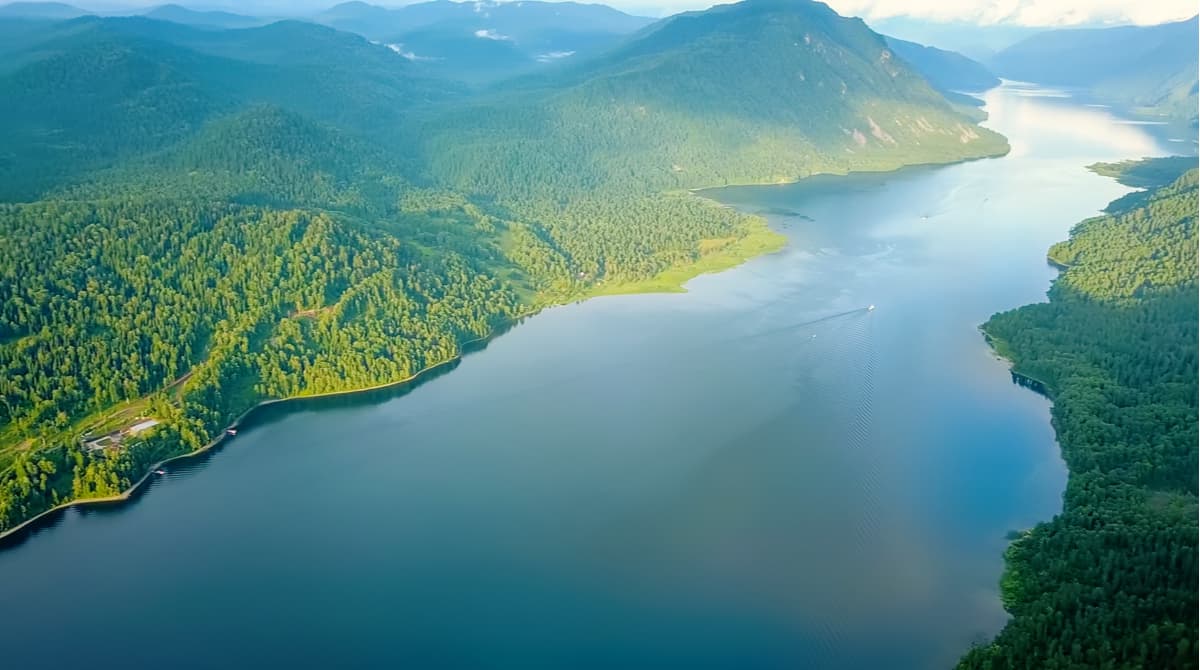
From the west, the territory of the reserve is bounded by the Chulyshman River, Karakem and Teletskoye Lake, in the north by the Torot Ridge (north of the Maly Mionok River), in the northeast by the Abakan Ridge (Mount Sadonskaya), in the southeast and east by the Shapshal Ridge (Mount Toshkalykaya), and in the south by the spurs of the Chikhachev and Chulyshman Ridges (Mount Bogoyash). The mountain ridges extend from south-east to north-west, the elevation of the territory gradually increases in the southeast direction. The relief is diverse featuring a high alpine belt replaced by plateau-like highlands, wide valleys and deep canyon-shaped gorges. The altitude difference is from 400 to 3500 meters above sea level. The main purpose of the Reserve is to preserve and study the gene pool of the endemic flora and fauna, individual species and communities of plants and animals, and to preserve the relict communities with absolutely unique biotypes not found anywhere else in the world.
The Altai Nature Reserve provides supervision and protection of the most valuable and rarest in beauty Lake Teletskoye, as well as the local nature, cedar forests, it is trying to restore the population of sable, elk, maral and other animals that were or still are on the verge of extinction.
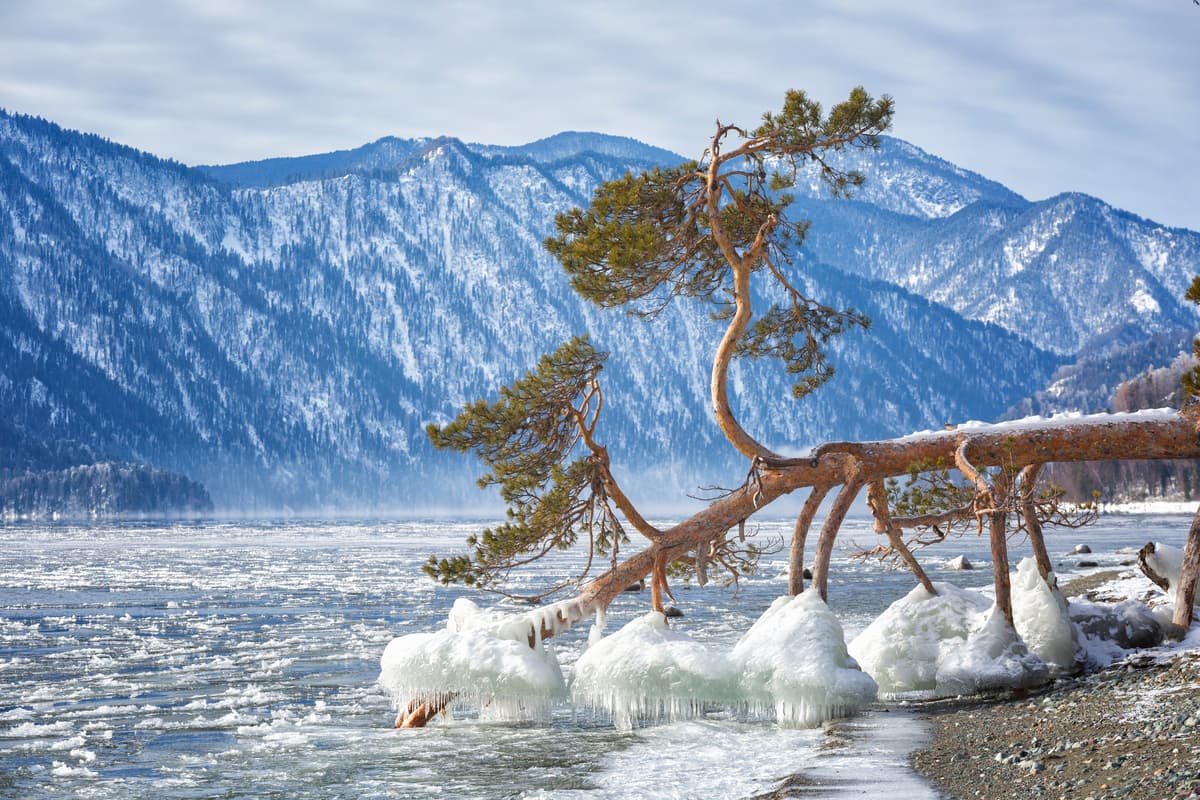
The lavish and diverse flora of the Altai Reserve includes 1500 species of plants, 136 species of mushrooms and 272 species of lichens. 34 species of plants, mosses, mushrooms and lichens are included in the Red Books of the Republic of Altai and Russia. There are over 200 endemic species here, they feature rare steppe, forest, water and highland plants. Also, you can still see many sites of the relict tundra steppe landscapes preserved in their original state.
The Reserve can boast of a great many coniferous trees. The most widespread breeds are the Siberian cedar, spruce, fir, pine, Siberian larch, birch. The pride of the reserve is pure cedar highland forests. Cedars are noteworthy here, many trees grow 1.8 meters in diameter and are 400-450 years old. Cedars can be found practically in all parts of the Reserve except the south of the Dzhulukul Basin. Fir forests in the Reserve grow only in its northern part called Priteletsky and can be found in smaller quantities in the basin of the Shavla River. Pine forests are well-spread on the eastern and northern shores of Lake Teletskoye, along the valleys of the rivers Kyga, Shavla, and some tributaries of the Chulyshman river.
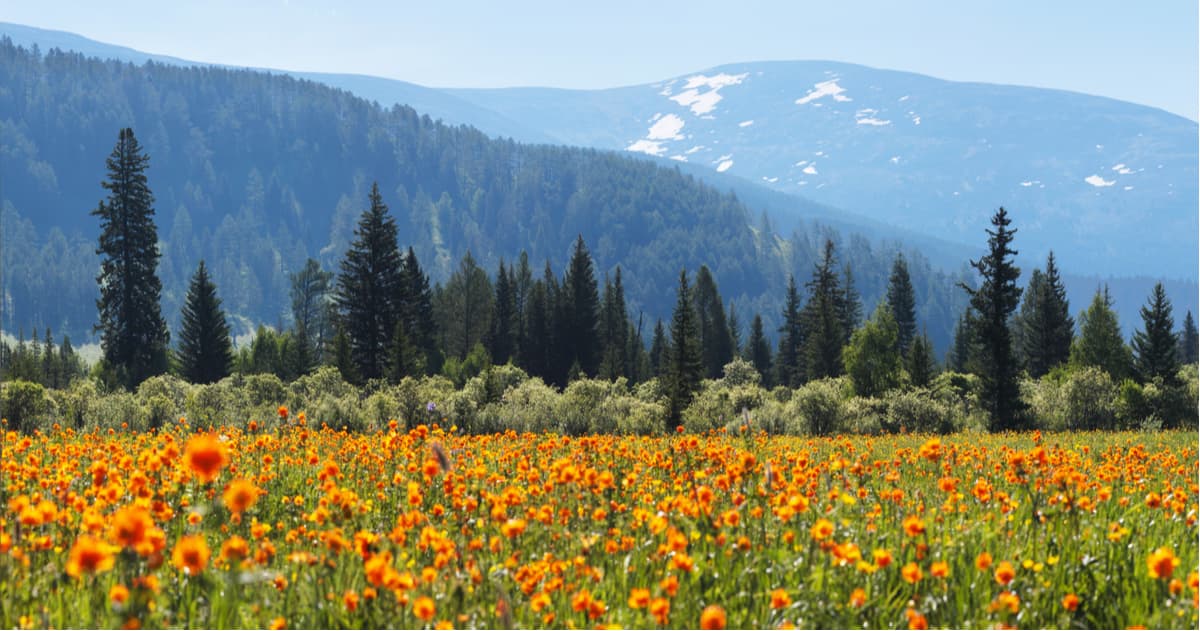
The meadows of the subalpine belt are rich in various herbs. The conventional wisdom has it that Altai herbs are healing, rare and have amazing properties, which in fact is true. The most common herbs are Daursky goldenrod, melancholy thistle, broad-leaved red-hot milkcap (Saussurea latifolia, this plant gives the monofloral honey that makes bees go crazy and disoriented in space, they carry their honey to the nearest beehive. As to the taste, opinions are divided. Some say your tastebuds will cry with joy, other connoisseurs say it is average. Yet what is good, it is a very profitable plant, a single beehive can produce 6-7 kg of honey per day in good weather. Saussurea honey crystallizes very slowly and stays liquid quite long, and has good healing properties.). Another rare medicinal plant is Rhaponticum carthamoides – a unique plant that elks like devouring when they are in a rut. It is an utterly invigorating plant used to stimulate your nervous system, tone the body and increase haemoglobin levels. It is often used in a combined treatment of cancer.
Beautiful alpine meadows are located near glaciers and snows on the Abakan Ridge. There are a lot of edelweisses here, this furry flower features in many Altai tales and legends. In translation from Greek edelweiss is a lion's paw, also it is called the silver flower of rocks, an alpine star. This flower is perceived as an image of love which is strong and can overcome any obstacles. It is also a symbol of inaccessibility and good luck. The Alpine zone, together with mountain steppes and tundras, occupies about 60 % of the reserve's territory, leaving only about 40% to the forests.
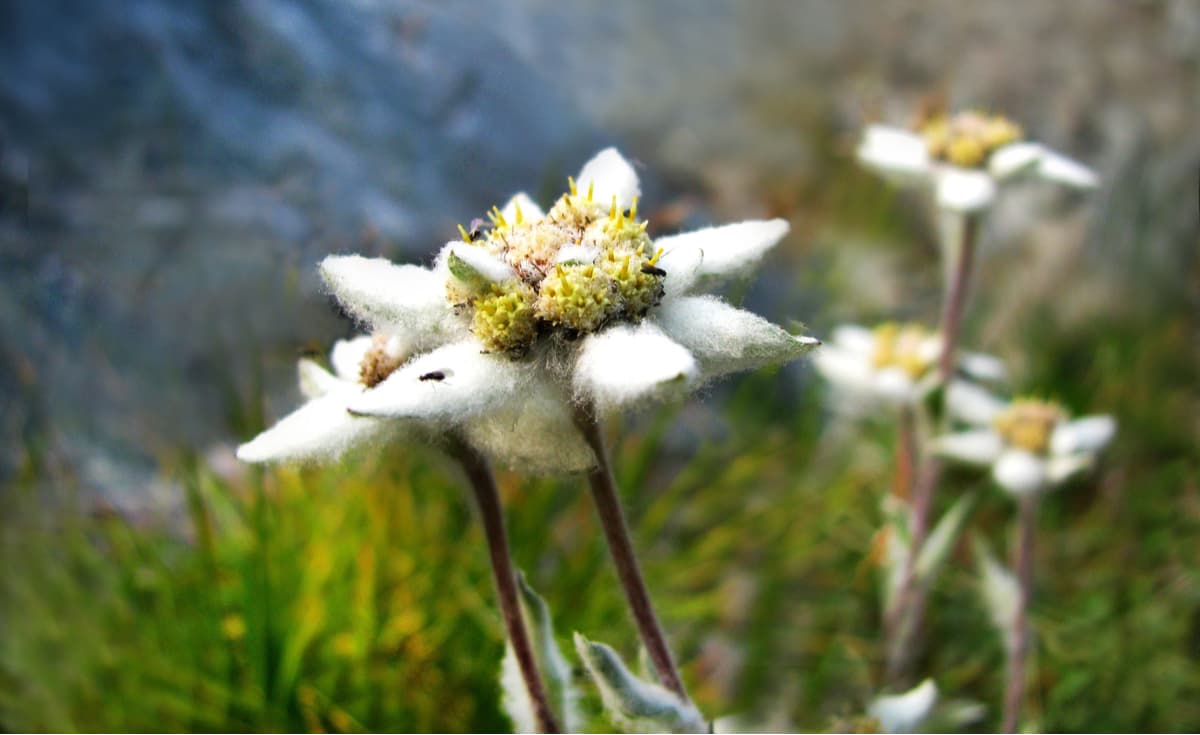
The complex relief of the reserve with heights up to 3500 m and various climatic conditions are favourable for species diversity. Among the predators are the wolf, fox, wolverine, brown bear. The cat family is represented by two species: the lynx and the snow leopard aka ounce. Sadly, it is almost impossible to see a snow leopard in its natural habitat both because of its catastrophic decline in population and because of the inaccessibility of places where this beautiful and fearless animal lives. The snow leopard is listed in the Red Books of the IUCN, Russia and the Altai Republic and is specially protected in 12 countries.
Since 2014, the World Wildlife Fund (WWF) has been implementing programmes aimed at snow leopard conservation in Russia. The Conservation Strategy has been approved by the state and is a very serious matter since this beautiful animal is on the brink of extinction. The habitats of this graceful cat are in the Altai, Tyva, Buryat Republics, and in the Krasnoyarsk Region of Russia.
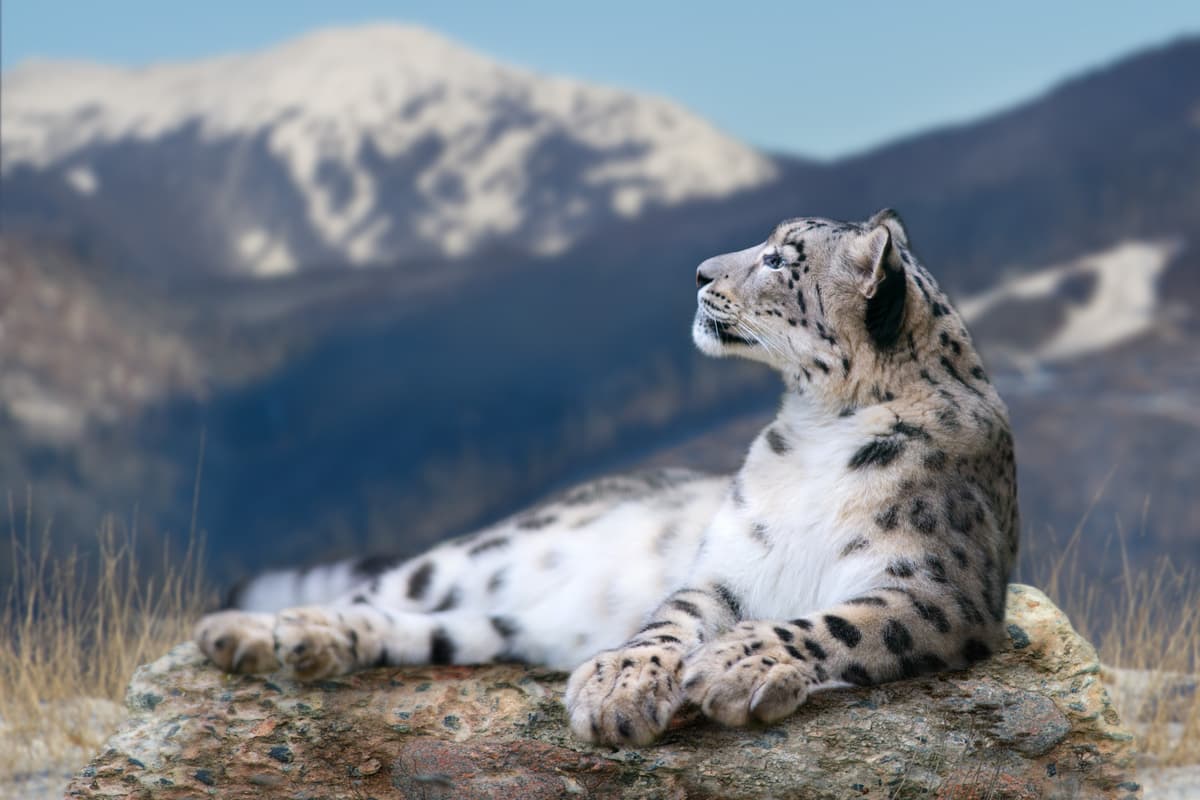
A snow leopard is called an ounce or irbis in the local Tuvan language. The name comes from the Turkic language and means a 'snow cat'. And this is the only big cat that cannot roar! No wonder, imagine if it did, it might cause avalanches in the mountains.
Snow leopard highlights:
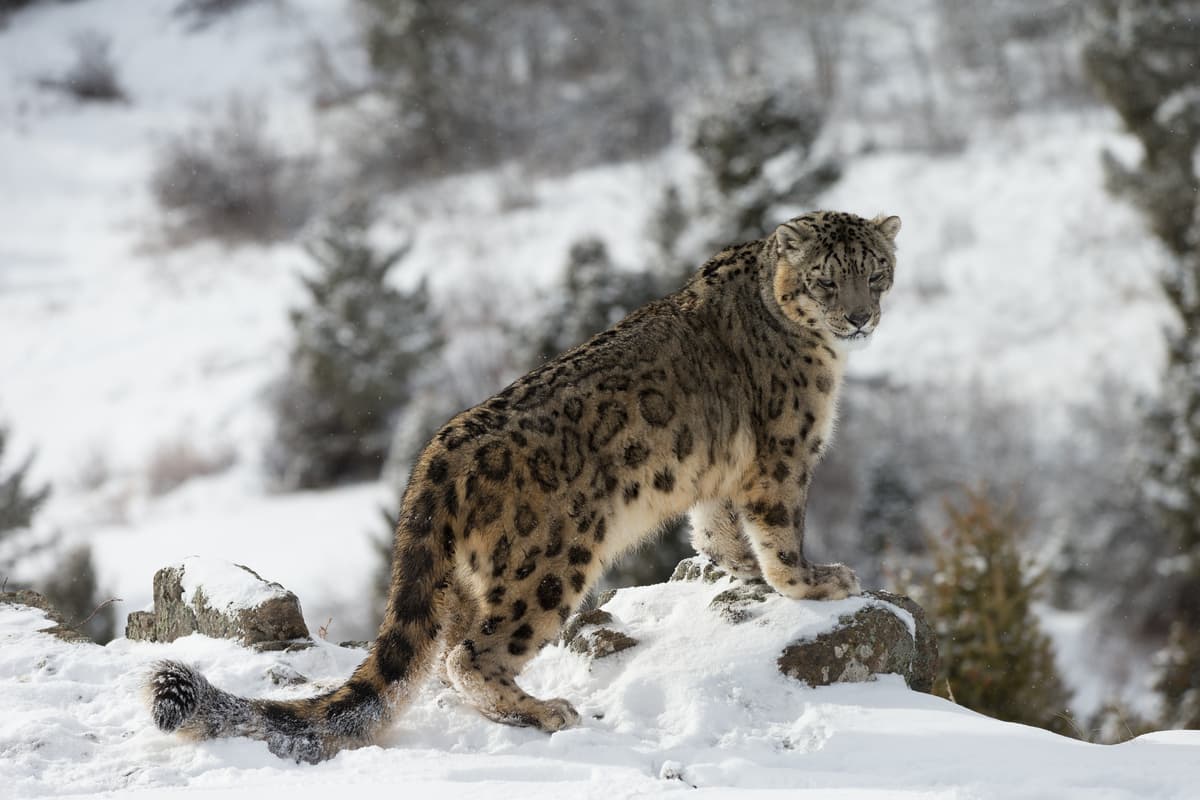
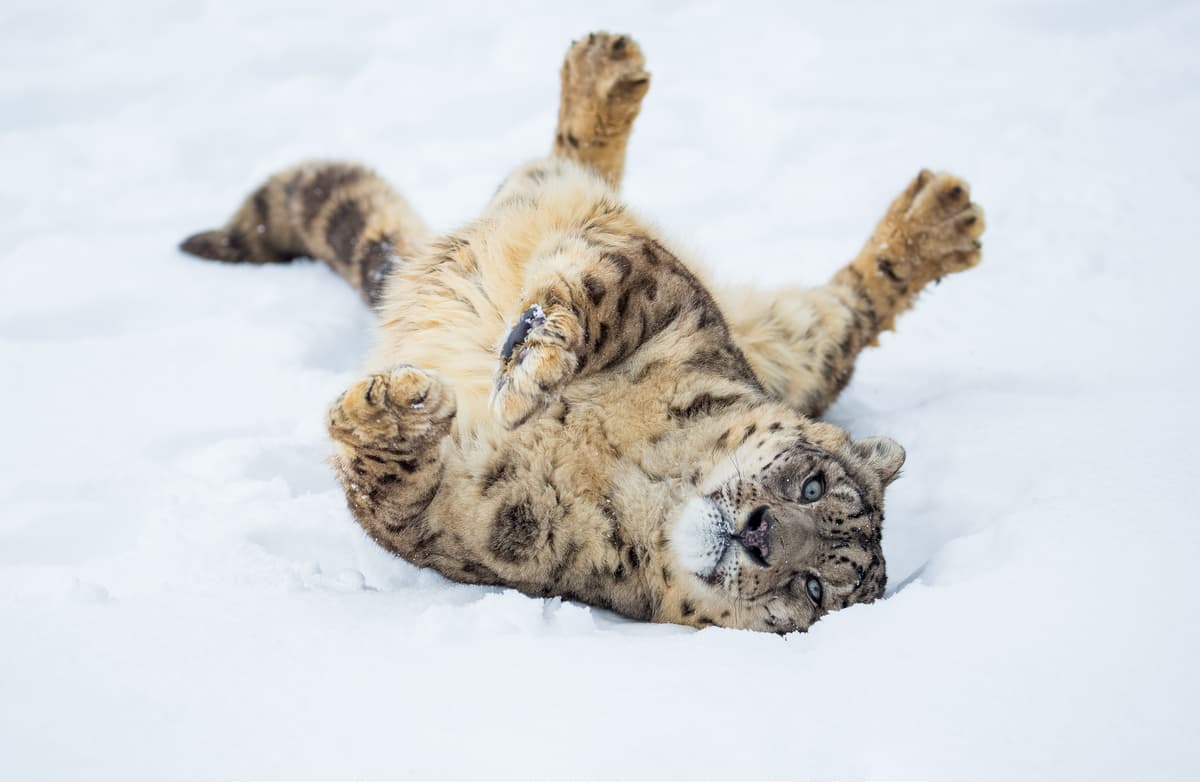
Siberian goats freely roam the mountain ranges of the reserve, and in the forests there lives Siberian musk deer – a forest subspecies of reindeer – a handsome animal with an amazing colour of thick fur. The Altai mountain ram – Argali – is the largest argali of the planet (those rams are also called Marco Polo’s sheep). It has beautiful massive horns and prefers the southern part of the reserve. Only a few dozen argali rams now live in the reserve. This species is also listed in all the Red Books.
More common inhabitants are marals, roes, elks and forest reindeers, the most numerous of them are marals (aka Siberian stags, Siberian red deer or wapiti). The roe deer are not numerous in the reserve, the forest reindeer are very rare. On particularly snowy plots, especially in cedar forests, one can find sable. Large species of Mustelides – wolverines, badgers, as well as smaller martens – weasels, Siberian weasels, ermines, are not numerous.
Typical inhabitants of the taiga are the squirrel and the Asian chipmunk, while the Siberian flying squirrel is more often found in the Priteletsky part of the Reserve. This part, especially its lakeside environs, is the only habitat of the beaver and the muskrat. In recent years, a wild boar has penetrated into the reserve from Tuva, the species has settled here, successfully reproduces and increases its number.
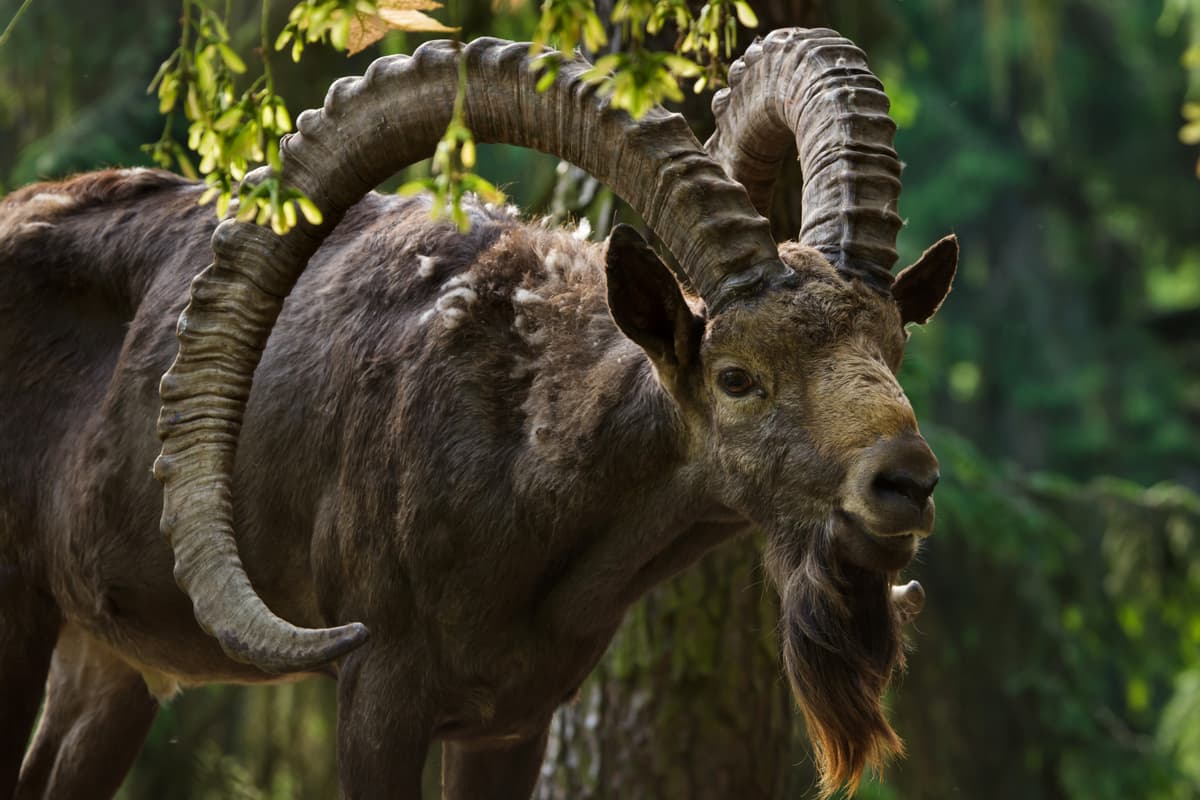
Lakes, river meadows and swamps are birds’ kingdoms. There are black-throated divers, big cormorants, whooper swans, herring gulls, whinchats, grey herons and others. For many bird species, the protected area is the main or even the only nesting place in the Altai Mountains. Apart from the mentioned above, white-winged velvet scoter (Melanitta deglandi) and white-tailed sea eagle (Haliaeetus albicilla) breed here. Small fields in the Chulyshman valley are much loved by the Mongolian lark.
In the Altai Nature Reserve, there are 59 rare and endangered species of animals, which is slightly more than half of all protected species in the Republic of Altai.
The climate is both continental and mountainous. It being continental is determined by the geographical location of the territory in the centre of the Asian continent. Here the climate is formed under the influence of Asian anticyclones and cold Arctic air masses. The second factor influencing the climate formation is the location of the protected area in the middle and high altitude belt of the Altai Mountain System.
The formation of the climate is also affected by a significant difference in air temperatures between the mountain peaks and the middle mountain valleys, high levels of solar radiation in winter and significant amounts of precipitation. The Reserve's climate is characterized by long frosty winters, short and humid summers, cold and long spring and autumn.
The climate in Turochak district is milder than in the other Altai areas. The average annual air temperature does not drop below +15°C (59F) with moderate humidity, sufficient to prevent droughts in the warm season and too frosty bites in the cold months. Winter in this part of the reserve is snowy. The temperature in January does not drop below -10°C (14F) and at the end of February, it is already +1°C (34F). The temperature in summer keeps steady at +23°C (73F). Teletskoye Lake doesn't warm up over +14°C (57F) due to its great depth and this warm peak happens only in July.
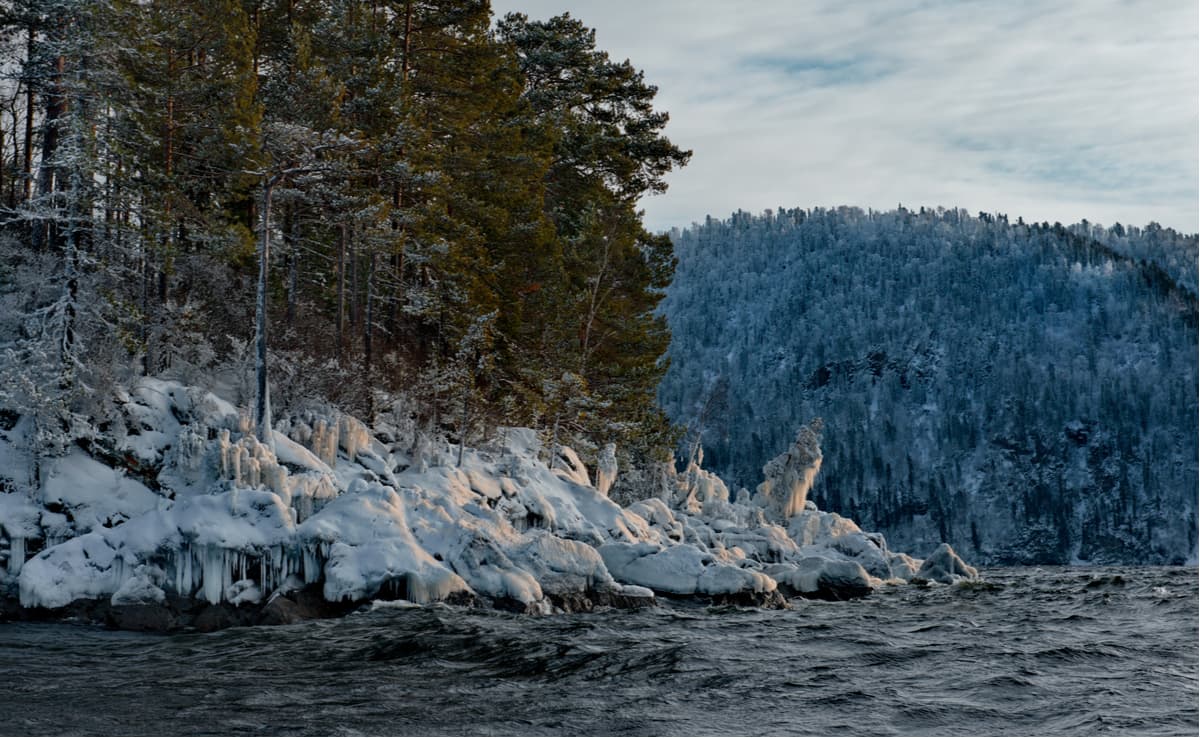
To the south, in the Ulagan district, in the specially protected zone of the park, due to large differences in altitude, the climate is sharply continental – there are short and very hot summers and cold long winters. The frost-free period is only 52 days. In January, the temperature drops to -32°C (-26F), and in mid-July in the intermountain hollows it does not rise above +14°C (57F), and in the highlands, it does not rise above +6°C or +7°C (43F), but there are a lot of sunny days and moderate precipitation.
The territory of the reserve in terms of geomorphological regionalization belongs to the Altai province of the country called Southern Siberia Mountains. Along the borders of the reserve, there are high ridges: the Abakan in the north, the Chikhachev in the south, and the Shapshal in the east.
Here is the list of the most outstanding peaks within the boundaries of the reserve:
Sadonskaya 2,890 m, the Abakan Ridge
Getedey 3,021 m, the Chikhachev Ridge
Toshkalikaya, 3,507 m, the Shapshal Ridge
Kurkurebazhi 3,111 m, and Tetykol 3,069 m, the Kurkure Massif
Bogoyash 3,143 m (in the local dialect - "venerated"), the mountain plateau Chulyshman
Nota bene: you are not allowed to climb those mountains as they are located in the protected territory, but who can stop you from admiring them from afar when you are fishing on the lake or taking a one-day trip to the falls?
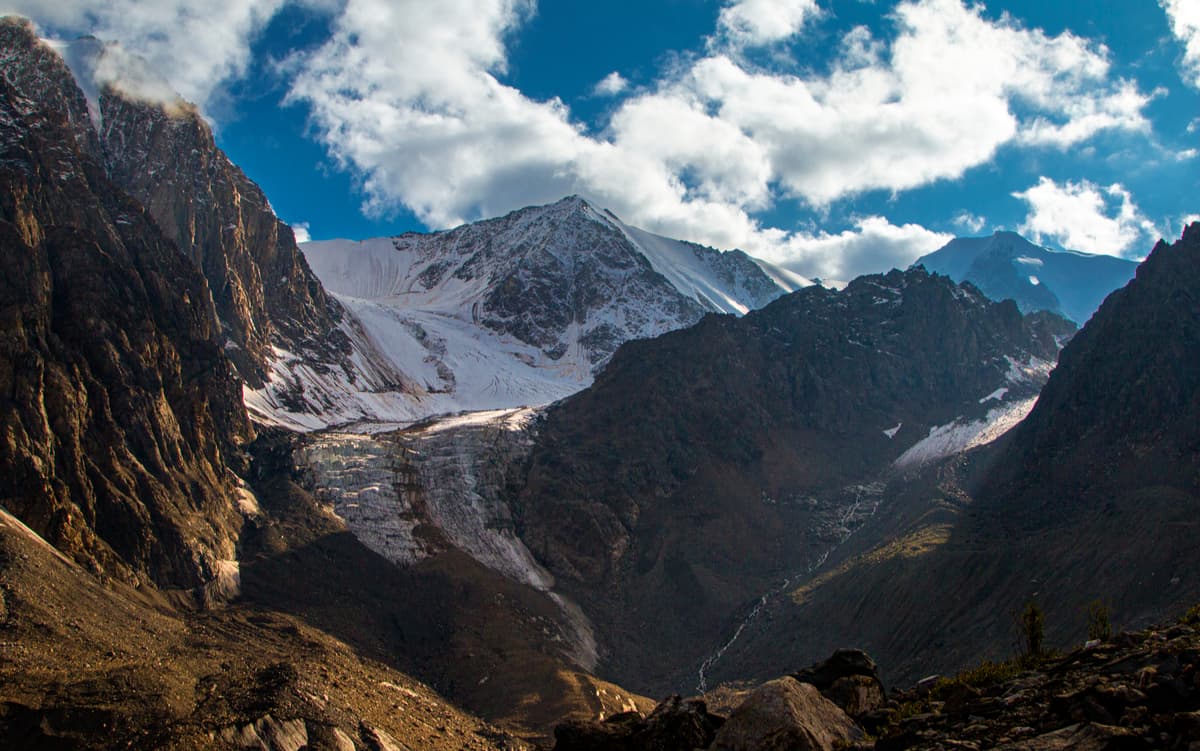
The territory of the Altai State Natural Biosphere Reserve is part of the UNESCO project called the Golden Mountains of the Altai, it enjoys the care and protection of domestic and international organizations because everybody is trying to save the astounding biodiversity and biotopes of the area, which is possible only through joint efforts. Also, the territory of this mountainous country is of extraordinary ethereal natural beauty. Among the most protected gems are the 22 lakes located in the reserve.
Often dubbed Little Baikal of the Western Siberia, Teletskoye Lake is undoubtedly the main big draw. It is 78 km long, the maximum depth is 325 m. The lake is fed by 70 rivers, including the main one – the Chulyshman River. Teletskoe lake flows into the Biy river thus feeding with its waters the Ob River, one of the biggest rivers in the world and the river with the largest basin in Russia.
About 400 years ago, on the shores of the lake lived tribes that called themselves teles (flesh), that's one of the origins of the name a – Teletskoye. The second name was Altyn-Kel or the Golden Lake. It is explained simply because at sunset ripples on the surface of the lake acquire a shade of the precious metal. The purest water allows viewing the bottom of the lake up to 14 meters without any image distortion.
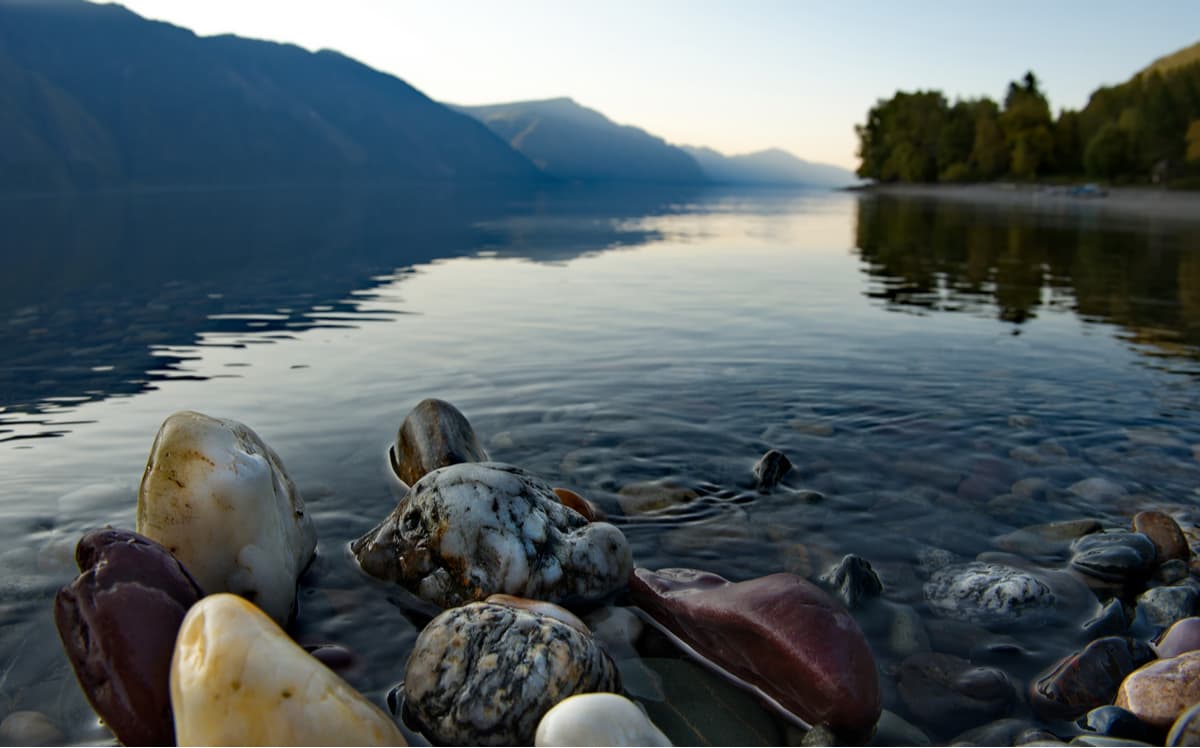
Lake Dzhulukul is by far the largest alpine lake of the Reserve. It is a 10-kilometre-long pond located in the sources of the Chulyshman River at an altitude of 2200 meters. 200 small reservoirs are strewn around this big behemoth. Such a location is a safe haven for nesting of various bird species, a place of spawning of the most valuable breeds of fish in the Altai Mountains.
Lake Dzhulukul fosters rapid growth of the lush tundra-steppe, a plant zone where flora and fauna of different parts of Northern Asia are mixed and live together in perfect symbiosis. In general, the high-mountain lakes of the Altai Reserve are very beautiful, with clear emerald blue water and picturesque shores.
The mountain rivers of the Altai reserve are famous for their waterfalls. The most accessible of them is located at the foot of the quite modest ridge called the Korbu, or Kobru (yes, the locals alternate the letters in the name), a hundred meters from the shore of Lake Teletskoye. There is an unassuming river on the ridge, if you go upstream, you will see a fascinating waterfall consisting of steps and ledges with a total height of 13 meters
The Korbu Falls has been a natural monument since 1978. The whole right bank of the lake, including the waterfall, is located in the Altai Nature Reserve. The only way to reach Korbu is by boat on the lake.
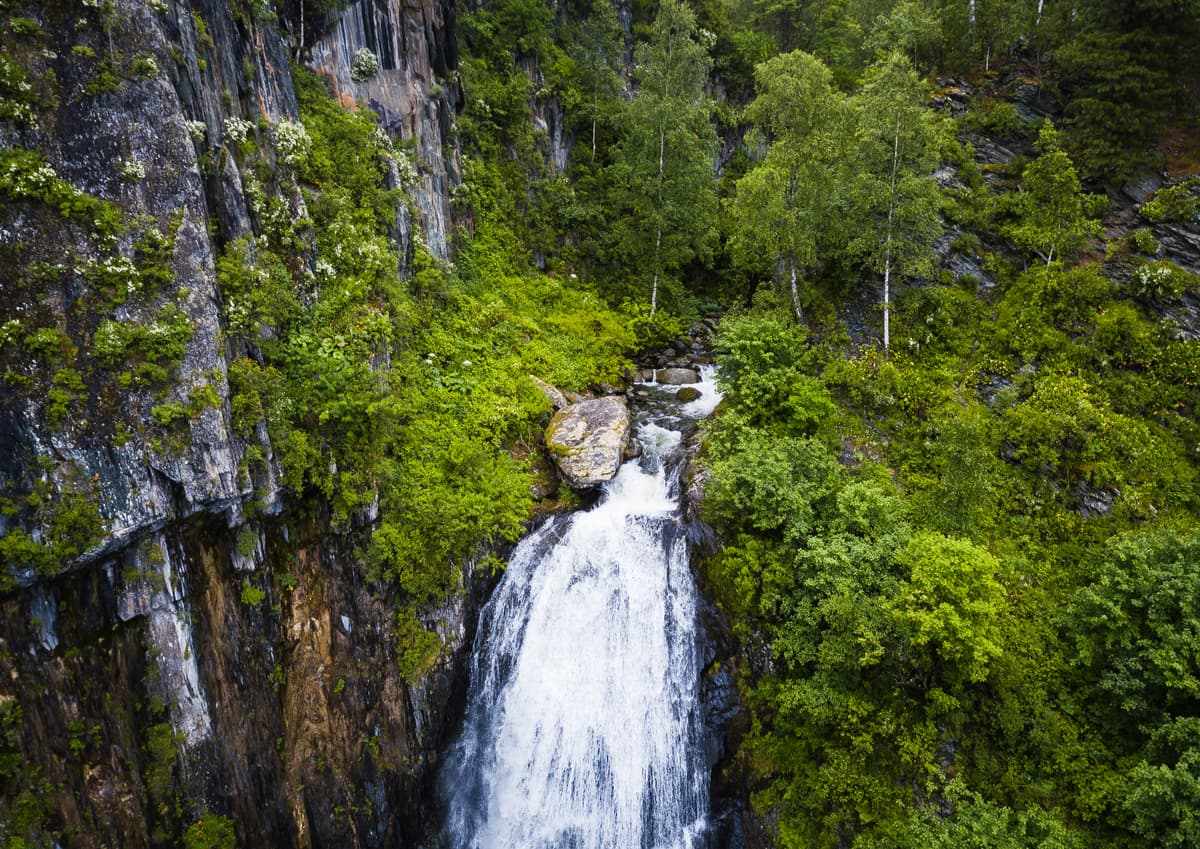
The Uchar Falls is one of the most amazing sights of the Altai Reserve and in Russia in general. Located 8km from the Chulcha River mouth, it is the largest cascading waterfall in the region. Uchar in the local dialect means "impregnable". Indeed, you can reach this 150-meter-long waterfall only on foot overcoming all kinds of natural obstacles along a rocky mountain path leading to it.
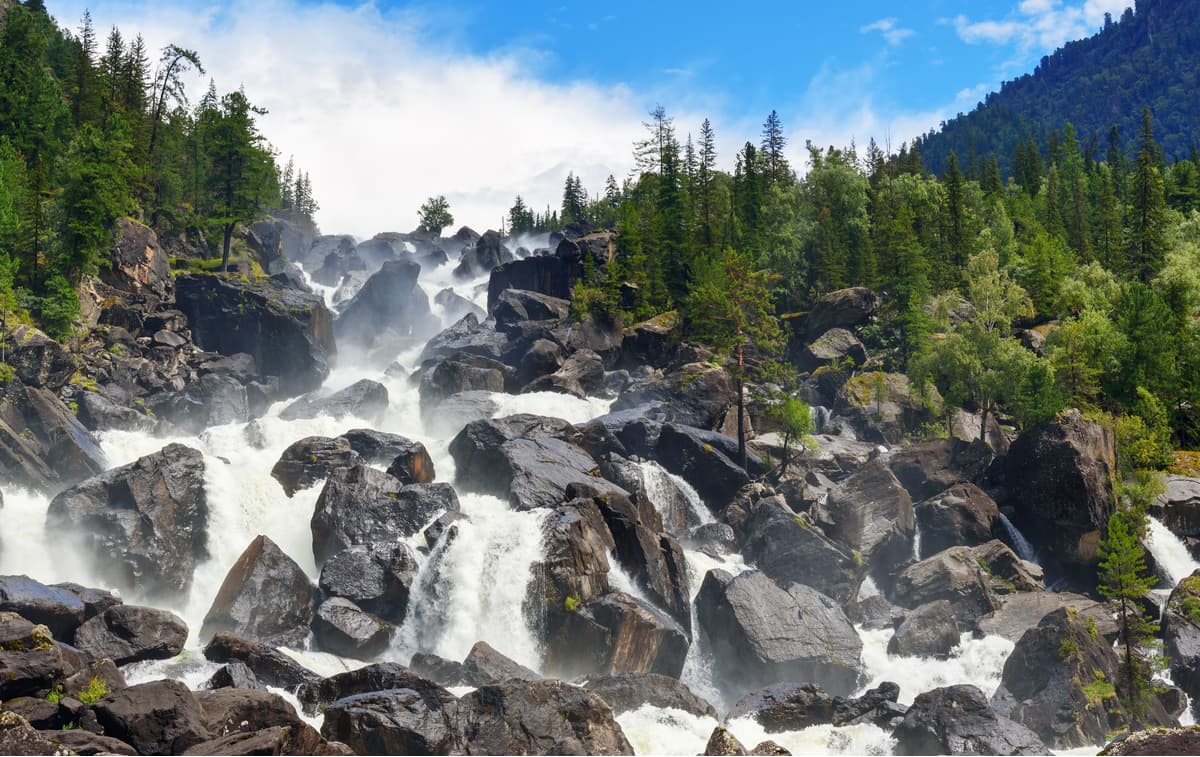
The Kokshi Falls is 3 meters tall and 2.5 meters wide, it is falling from a kind of a rock ledge on the Kokshi River. The waterfall and the river below it form a kind of a bizarre aquarium. In the clear crystal water you can admire rare small fish. They say that this place has some kind of natural force being energetically positively charged, that's why animals of the Altai Reserve love it very much.
The territory of the reserve is practically impassable, there are only rare trails laid by foresters, hunters and reserve staff. A visit to the reserve is possible only with the permit of the administration and is formalized by a corresponding pass. For the details, visit the official website where you will find the application form for the permit and much more information on the rules and regulations in the reserve.
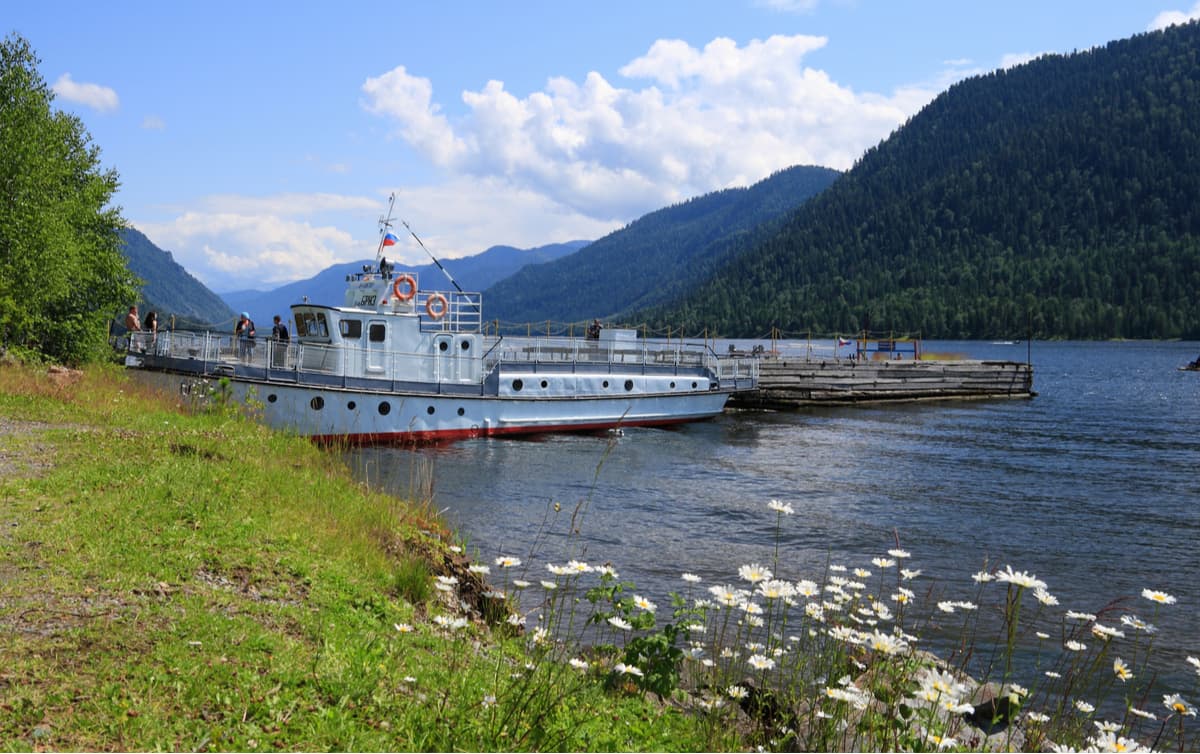
There are several routes in the Altai Nature Reserve and you are not allowed to deviate from the appointed paths since the territory is practically impassible and it is just a matter of minutes to get lost in the local woods. It is also strongly recommended to have a guide accompanying you. In general, there are no tourist stops on the cordons of the reserve that is why all the routes are one-day trips only. The tourist season is June to September.
This huge water reservoir is one of the most visited places. There are pedestrian, water, bicycle, air and car guided tours. Besides, many tourists come to the lake for fishing. There are fourteen kinds of fish in the lake: taimen, teletsky grayling, lenok (a very tasty representative of a salmon family), whitefish, perch, etc.
You can stay and live in the villages nearby – Artybash or Iogach, as well as at the mouth of Lake Teletskoye. There are guesthouses and camping sites. Alternatively, Yailu village has a guest house or you can find accommodation with locals, which is probably the best choice because you will be treated with hearty hospitality and yummy local homemade food.
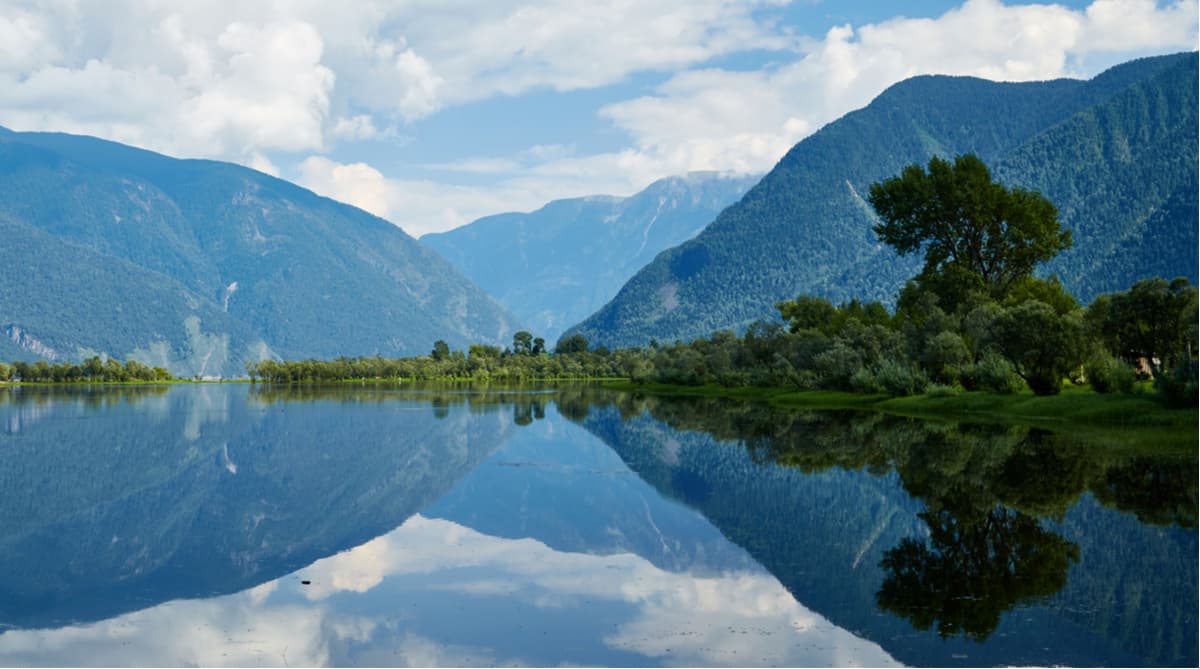
The pedestrian route length is 5 km doable in 5 hours. Artybash village is the starting point, take a boat ride to Bele village, that is about 60 km. The Belinsky Terrace is a unique natural, climatic and ethnographic formation. There is an orchard there, a research site and a phenological route for scientific observations. The most ancient monuments of the Turkic period Kezer-Tash (warrior stone), It-Bash (dog stone) are well worth visiting.
This route combines water rides and some passages on foot, the length covered on foot is 8 km, the duration is approximately 5 hours. The route starts from Yailu Terrace and goes to Chichelgan Cape introducing you to a variety of natural landscapes, Yailu Manor, the ethno-ecological visit center Altai Ail, the work of the weather station, the features of alpine flora and fauna including species listed in the Red Book. You will see relics and endemics of the Altai reserve, cedar, fir and larch trees. There is a phenological research observation platform, orchards of the Yailu terrace and Yailu observation viewpoint gives you a bird-view panorama over up to 80% of the water area of Lake Teletskoye.
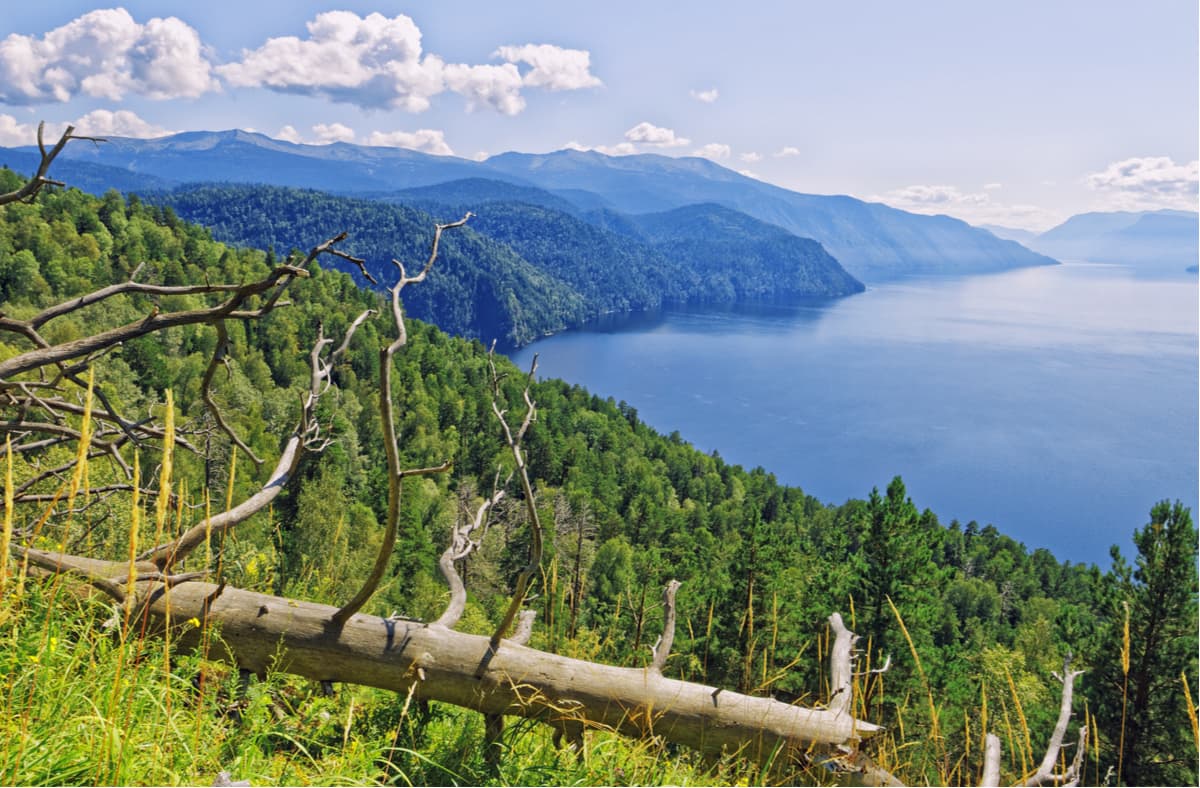
Take a 25-kilometer boat ride from Artybash village to the Korbu waterfall. The destination point is located at the mouth of the river Big Korbu. The drop height is 12.8 meters to be exact. On the route, you can learn about the floral, insect and bird diversity of the Altai Nature Reserve, see the rock outcrops and enjoy the beautiful surroundings.
The route length is 8.5 km, the duration is 3.5 hours. The difficulty is average, but the route is mainly aimed at trained tourists. The most dangerous rocky area is equipped with ropes and metal brackets. The Uchar is the largest cascading waterfall in the Altai Mountains and one of the most amazing sights of the Altai reserve. Unlike other eco-tracks of the reserve, mainly tied to the water area of Lake Teletskoye, this route follows one of the major tributaries of the Chulyshman river, which actually increases the complexity of the route as you have to surmount some obstacles waiting for you on this mountain path. It is not for nothing that the falls are called the Uchar, meaning impregnable. Another difficulty here is that there are no places for stopovers, once you are on the path you go the full distance. Yet, the rewards are aplenty, you will see taiga landscapes, swift rivers the Chulyshman and Chulcha and breathe in the freshest air imaginable.
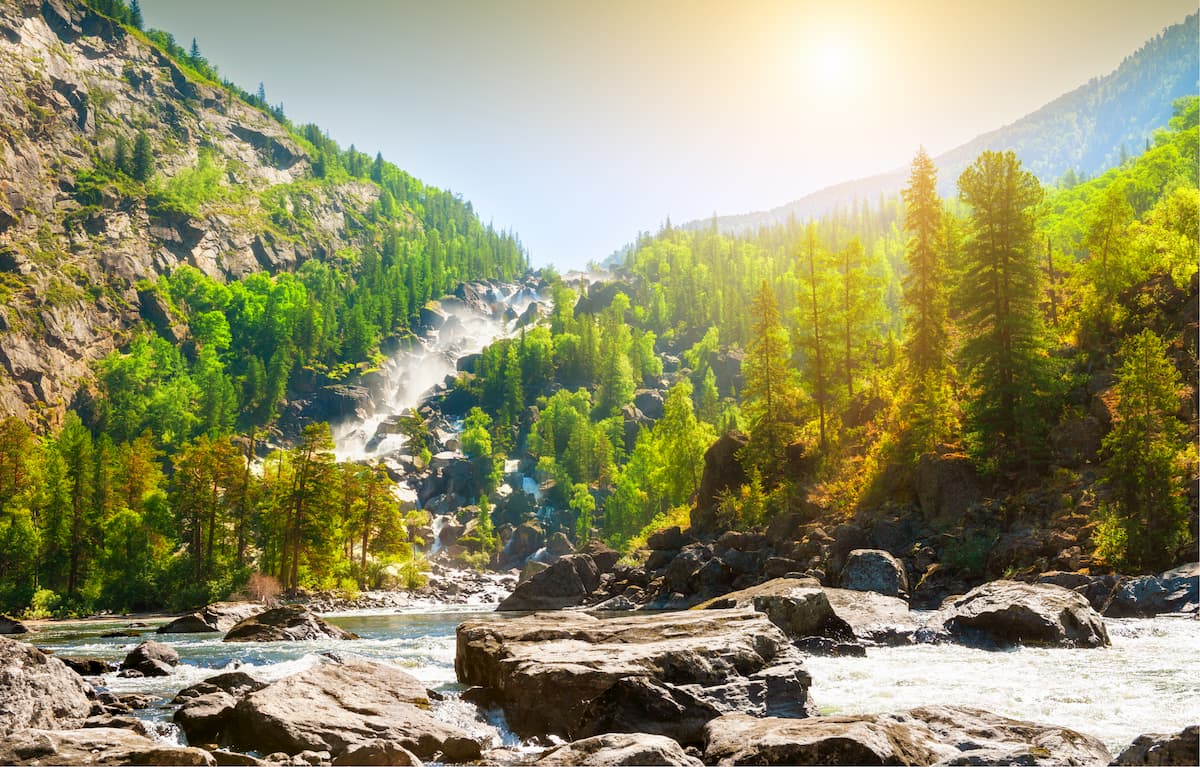
This is a walkable 5 kilometer route that starts with a 35-km boat ride from Yailu (or Artybash) settlement to the Chelyush cordon. The highlights are the history of the reserve, its flora and fauna, the waterfalls of the Baskon river, life and work of state inspectors on remote cordons of the reserve. You will see the powerful lavish green coniferous forests and have a look at the bald mountains located in the vicinity.
The Kokshi Falls route starts just as all others, you take a boat from Yailu village to the Kokshi cordon and after a 25-km ride, you walk up the Kokshi river. Alternatively, you can start from Artybash village, the boat ride to the Kokshi cordon will be 45 km then. The pedestrian route length is 8 km, the duration is 5 hours. The beginning of the route is the Kokshi cordon. You will be told about the intricacies of life and work of the state inspectors of the cordon and will see the Kokshi falls located on the Kokshi River, the largest tributary of Teletskoye Lake on its right bank. The whole river basin is a very picturesque place. However, the most interesting for visitors is the waterfall itself and the pond below it, which is shaped like an aquarium and allows you to see the water inhabitants in crystal clear water.
The central manor of the reserve is located in the village of Yailu, the main office is in Gorno-Altaisk, the capital of the Altai Republic. See the map of the Reserve on the official website.
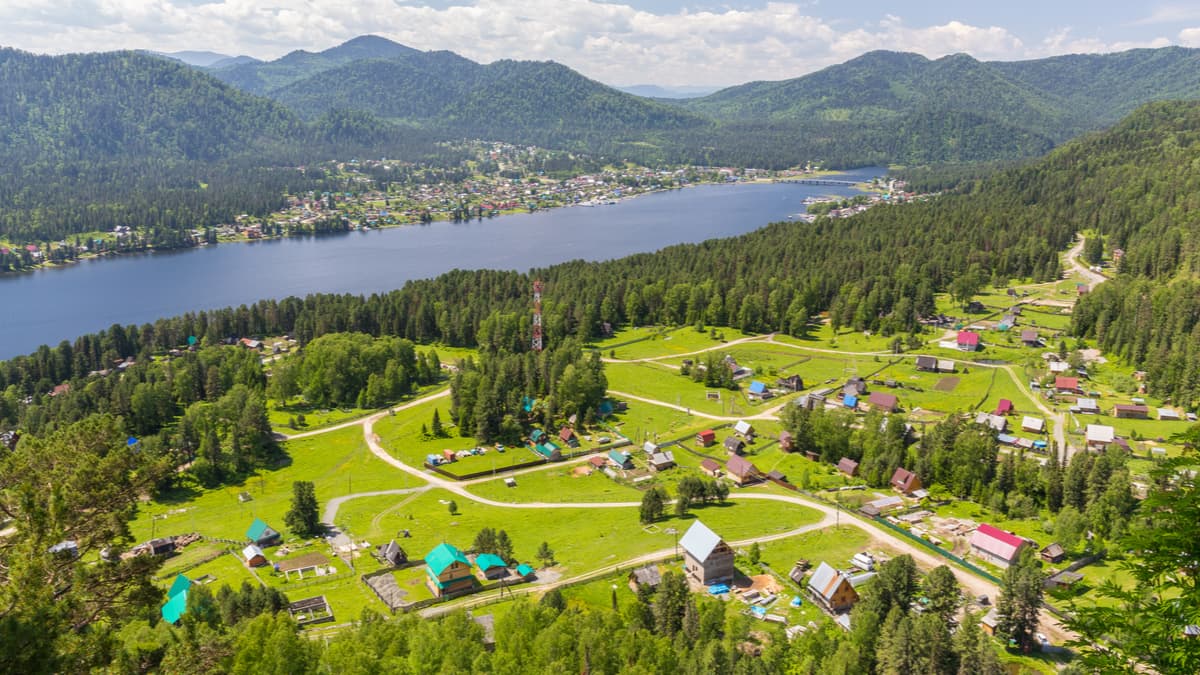
It is more convenient and quicker to get to Gorno-Altaisk by plane. Should you opt for a train, take a ride to Biysk station (100km from Gorno-Altaisk) and then go by bus or by car.
The closest stop is Artybash village, from there you can get to the protected area by boat. The territory of the reserve does not have a single road except the recently continued gravel road in the north from Biyka to Yailu village, which means you are truly in the wild here.
Gorno-Altaisk is the capital and the only city in the Republic of Altai. Gorno-Altaisk Airport is 6 km west of the center. The nearest railway station Biysk is 100 km away. The city is located in the northwestern part of the Altai Mountains, in an intermountain basin surrounded by low peaks at an altitude of 270-305 m above sea level, at the confluence of the rivers Ulalushka and Maima which flow into the river Katun about 250 km north of Mount Belukha, the highest point of the Altai and Siberia.
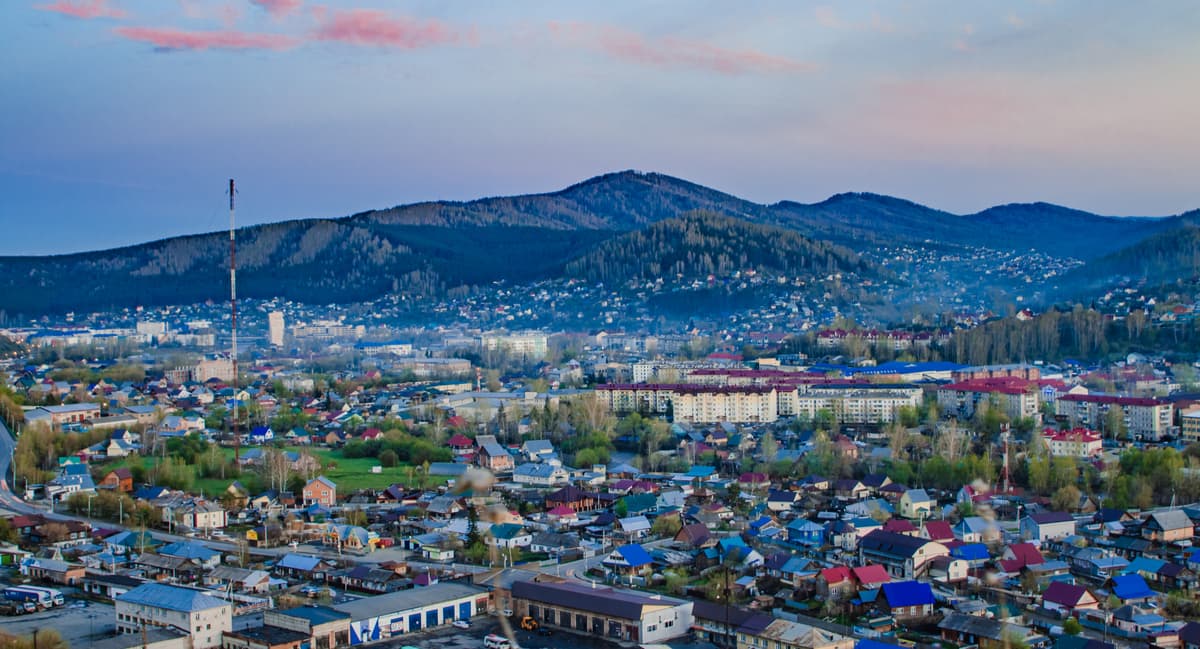
Explore Altay National Reserve with the PeakVisor 3D Map and identify its summits.








